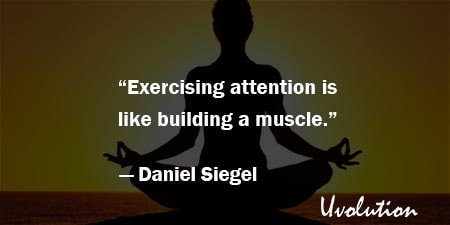Mindsight by Daniel Siegel Summary
The Book in 1 Sentences
Mindsight: The New Science of Personal Transformation
“Within each of us there is an internal mental world—what I have come to think of as the sea inside—that is a wonderfully rich place, filled with thoughts and feelings, memories and dreams, hopes and wishes.
Of course it can also be a turbulent place, where we experience the dark side of all those wonderful feelings and thoughts—fears, sorrows, dreads, regrets, nightmares. When this inner sea seems to crash in on us, threatening to drag us down below to the dark depths, it can
make us feel as if we are drowning.
Who among us has not at one time or another felt overwhelmed by the sensations from within our own minds?
Sometimes these feelings are just a passing thing—a bad day at work, a fight with someone we love, an attack of nerves about a test we have to take or a presentation we have to give, or just an inexplicable case of the blues for a day or two.
But sometimes they seem to be something much more intractable, so much part of the very essence of who we are that it may not even occur to us that we can change them.
This is where the skill that I have called “mindsight” comes in, for mindsight, once mastered, is a truly transformational tool. Mindsight has the potential to free us from patterns of mind that are getting in the way of living our lives to the fullest.” ~ Dan Siegel
11 BIG Ideas
2. Mindsight is Our Seventh Sense
4. Integration = Flexible & Free
5. The River of Integration & FACES Flow
8. Brain Hygiene Basics = Regular Exercise + a Good Diet + Sleep
Mindsight Book Summary
1. What is Mindsight?
“Mindsight is a kind of focused attention that allows us to see the internal workings of our own minds. It helps us to be aware of our mental processes without being swept away by them, enables us to get ourselves off the autopilot of ingrained behaviors and habitual responses, and moves us beyond the reactive emotional loops we all have a tendency to get trapped in.
It lets us “name and tame” the emotions we are experiencing, rather than being overwhelmed by them...
You can also think of mindsight as a very special lens that gives us the capacity to perceive the mind with greater clarity than ever before...
And it allows us to reshape and redirect our inner experiences so that we have more freedom of choice in our everyday actions, more power to create the future, to become the author of our own story. Another way to put it is that mindsight is the basic skill that underlies everything we mean when we speak of having social and emotional intelligence.”
Note that “One of the key practical lessons of modern neuroscience is that the power to direct our attention has within it the power to shape our brain’s firing patterns, as well as the power to shape the architecture of the brain itself.”
2. Mindsight is Our Seventh Sense
“Our first five senses allow us to perceive the outside world—to hear a bird’s song or a snake’s warning rattle, to make our way down a busy street or smell the warming earth of spring.
What has been called our sixth sense allows us to perceive our internal bodily states—the quickly beating heart that signals fear or excitement, the sensation of butterflies in our stomach, the pain that demands our attention.
Mindsight, our ability to look within and perceive the mind, to reflect on our experience, is every bit as essential to our well-being. Mindsight is our seventh sense.”
3. 3 Fundamental Principles
“Everything that follows rests on three fundamental principles.
The first is that mindsight can be cultivated through very practical steps...
Second, when we develop the skill of mindsight, we actually change the physical structure of the brain... How we focus our attention shapes the structure of the brain...
The third principle is at the heart of my work as a psychotherapist, educator, and scientist. Well-being emerges when we create connections in our lives—when we learn to use mindsight to help the brain achieve and maintain integration, a process by which separate elements are linked together into a working whole.”
Note that “The human mind is a relational and embodied process that regulates the flow of energy and information.”
4. Integration = Flexible & Free
“Integration enables us to be flexible and free; the lack of such connections promotes a life that is either rigid or chaotic, stuck and dull on the one hand or explosive and unpredictable on the other.
With the connecting freedom of integration comes a sense of vitality and the ease of well-being. Without integration we can become imprisoned in behavioral ruts—anxiety and depression, greed, obsession, and addiction.
By acquiring mindsight skills, we can alter the way the mind functions and move our lives toward integration, away from these extremes of chaos and rigidity. With mindsight we are able to focus our mind in ways that literally integrate the brain and move it toward resilience and health.”
“Within each of us is an inherent drive toward health—a push toward integration.”
5. The River of Integration & FACES Flow
“Now the qualities of an integrated flow spelled a universally memorable word: FACES, for Flexible, Adaptive, Coherent, Energized, and Stable.
We can say that any healthy complex system has a FACES flow. In other words, when the self-organizational movement of the system is maximizing complexity, it attains a harmonious flow that is at once flexible, adaptive, coherent, energized, and stable...
I like to imagine the FACES flow as a river. The central channel of the river is the ever-changing flow of integration and harmony. One boundary of this flow is chaos. The other boundary is rigidity. These are the two banks of the
river of integration.”
“An old, dear and now-departed friend, the poet, philosopher, and all around wonderfully wise John O’Donohue, captured the essence of this emergent flow when he said that he’d love to live like a river, carried by the surprise of his own unfolding.”
6. The "Hub of Awareness"
“How we focus our attention is the key to promoting integrative changes in the brain. With the integration of consciousness, we actually build the skills to stabilize attention so that we can harness the power of awareness to create choice and change.
This is why the integration of consciousness is the foundation for the other domains. Creating what I’ll call a “hub of awareness” enables us to acknowledge troubling states without being taken over by them, and to see things as they are, rather than being constrained by our expectations of how they should be.”
7. Mindfulness
“In summary, here is what modern clinical research, 2,500 years of contemplative practice, recent neuroscience investigations, and my own experience all suggest:
Mindfulness is a form of mental activity that trains the mind to become aware of awareness itself and to pay attention to one’s own intention.
As researchers have defined it, mindfulness requires paying attention to the present moment from a stance that is nonjudgmental and nonreactive. It teaches self-observation; practitioners are able to describe with words the internal seascapes of the mind.
At the heart of this process, I believe, is a form of internal “tuning in” to oneself that enables people to become “their own best friend.”
And just as our attunement to our children promotes a healthy, secure attachment, tuning in to the self also promotes a foundation for resilience and flexibility.”
“With practice, a mindful state becomes a mindful trait.”
“The observational distance that allows us to watch our own mental activity is an important first step toward regulating and stabilizing the mind.”
8. Brain Hygiene Basics = Regular Exercise + a Good Diet + Sleep
“I reminded him that with regular exercise, a good diet, and sleep, he could set the foundation for promoting neuroplasticity. Jonathan and I made a verbal agreement that he would follow this “prescription” for health.
It’s amazing how often these basics of brain health are ignored. Exercise is an underrated treatment—and now we know that aerobics not only releases the endorphins that can combat a down mood but also promotes the growth of the brain.
Eating regularly and well, balancing the various food groups, and avoiding excess sugar and stimulants can help to reduce mood swings.
And sleep, though in short supply and difficult at times to initiate for Jonathan, is a healer that can be approached in a systematic way.
Sleep hygiene includes setting up a calming routine before bed. Minimizing caffeine or other stimulants once evening approaches, if not before; shutting off digital stimulation an hour or two before sleeping; and quiet activities such as taking a bath, listening to soothing music, or reading a book can all help the body as well as the mind to settle.
With these brain hygiene basics in our contract, we could move into our specific efforts to promote integration.”
9. Refocus a Wandering Attention
“The renowned psychologist William James once said, “The faculty of voluntarily bringing back a wandering attention, over and over again, is the very root of judgment, character, and will. . . . An education which should improve this faculty would be the education par excellence.”
Though James also said, “It is easier to define this ideal than to give practical directions for bringing it about,” we actually do know how to refocus a wandering attention again and again—to use mindfulness practice to educate the mind itself.”
“Exercising attention is like building a muscle.”
10. SNAG Your Brain!
“I drew a picture of the brain and told Stuart about the left and right sides. Our goal, I said, was to help him develop a more balanced whole brain—to add new right-hemisphere abilities and reinforce his already well-developed left side.
Then I introduced one of my acronyms, SNAG, for Stimulate Neuronal Activation and Growth. I said we could SNAG his brain to create and strengthen neural connections.
Wherever neural firing occurs, existing neurons can make new or enhanced synaptic connections through the process called synaptogenesis. New neurons can be stimulated to develop, as well—a process called neurogenesis.
I also explained how the myelin can thicken, which increases the electrical conduction among interconnected neurons. And, as I’d told Jonathan, among the keys to neuronal growth are novelty, attention, and aerobic exercise.
Stuart liked the SNAG acronym, and I was happy his left mode seemed to appreciate the wordplay.
Short of using an electrical probe, how can we strategically target a particular portion of the brain? The answer is attention.”
“People with mindfulness training have a shift in their brains toward an “approach state” that allows them to move toward rather than away from challenging situations. This is the brain signature of resilience.”
11. Practice, Till It Be Your Mind’s Natural State
“A cascade of positive effects seems to emerge spontaneously when integration has been initiated. It’s like the old physics idea of pushing a ball up a hill to get it rolling down the other side.
It takes considerable effort and deliberate attention to move beyond the initial engrained, nonintegrated state—to push the ball up the hill. This is the intentional work of change.
But ultimately the emerging mind takes its natural course towards integration, and the ball flows effortlessly down into the valley of coherence. Integration is the mind’s natural state.”
That was my QUICK summary of the great book Mindsight by Daniel Siegel. If you’re interested, get your copy. There is a HUGE amount of life-changing ideas in this book, and we’ve only touched on a tiny bit of it.
Buy The Book: Mindsight by Daniel Siegel

GET Blinkist 7 Days FREE Trial
3000+ Book Summaries
(Audio and Text)








